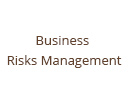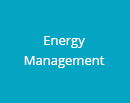Risk assessment and management
policy support the sustainable business
module for increased profitability. Our
risk management approach incorporates
sustainability and provides management
with useful data for identifying emerging
issues and developing new and better
products and processes that help protect
corporate reputation and improve
shareholder value.
Sustainability gives us an opportunity
to look at risks in a broader than a
traditional risk management framework,
which is to look beyond economic,
strategic and operational factors and
to include social and environmental
considerations, sustainability allows
corporations to consider emerging risk
areas and to look for opportunities
presented by risks that are overlooked
by other analytical and systems-driven
approaches. A more holistic point of view
assures sound financial management,
ethical corporate governance and
transparency with respect to information
provided to employees and other
stakeholders. |
Examples of emerging issues of concern
in the sustainability area for our
industry include climate change, social
justice, depletion of non-renewable
resources, brand damage (including
boycotts), shareholder action s related
to sustainability issues and disclosure of
historic environmental liabilities.
Sustainability risk management also
requires the evaluation of many aspects
of the entity’s operations that are not
part of most current corporate programs.
Examples include energy consumption,
emissions of gree house gases, water
use and waste generation/ consumption,
AFR etc.
At Ambuja, we address many aspects
of sustainability, as it helps in bringing
in business efficiency which boosts
profits. Efficient productivity includes
reduced material requirements, reduced
energy for production, reducing the toxic
gas emission, improving recyclability,
improving the durability and reliability
of products, and maximizing the use of
renewable resources. |
Implementation of a sustainability
program starts with an understanding
of corporate and regional principles and
values. The fundamental values that unify
an entity’s actions are a way of thinking
about the work and the people that are
derived from where the company has
been, where it is today and its quest to
continue delivering value into the future.
1st step towards implementation is risk/
opportunities assessment, where all the
possible risks/opportunities are identified
and then mapped. This is done with the
help of the matrix, (Exhibit 1) which is
designed to illustrate which sustainable
development issues have the highest
importance or significance to:
- Our Stakeholder
- Our Company
The risks/opportunities are identified and
placed as bubbles, which depending
upon importance takes the position in the
matrix. |









































